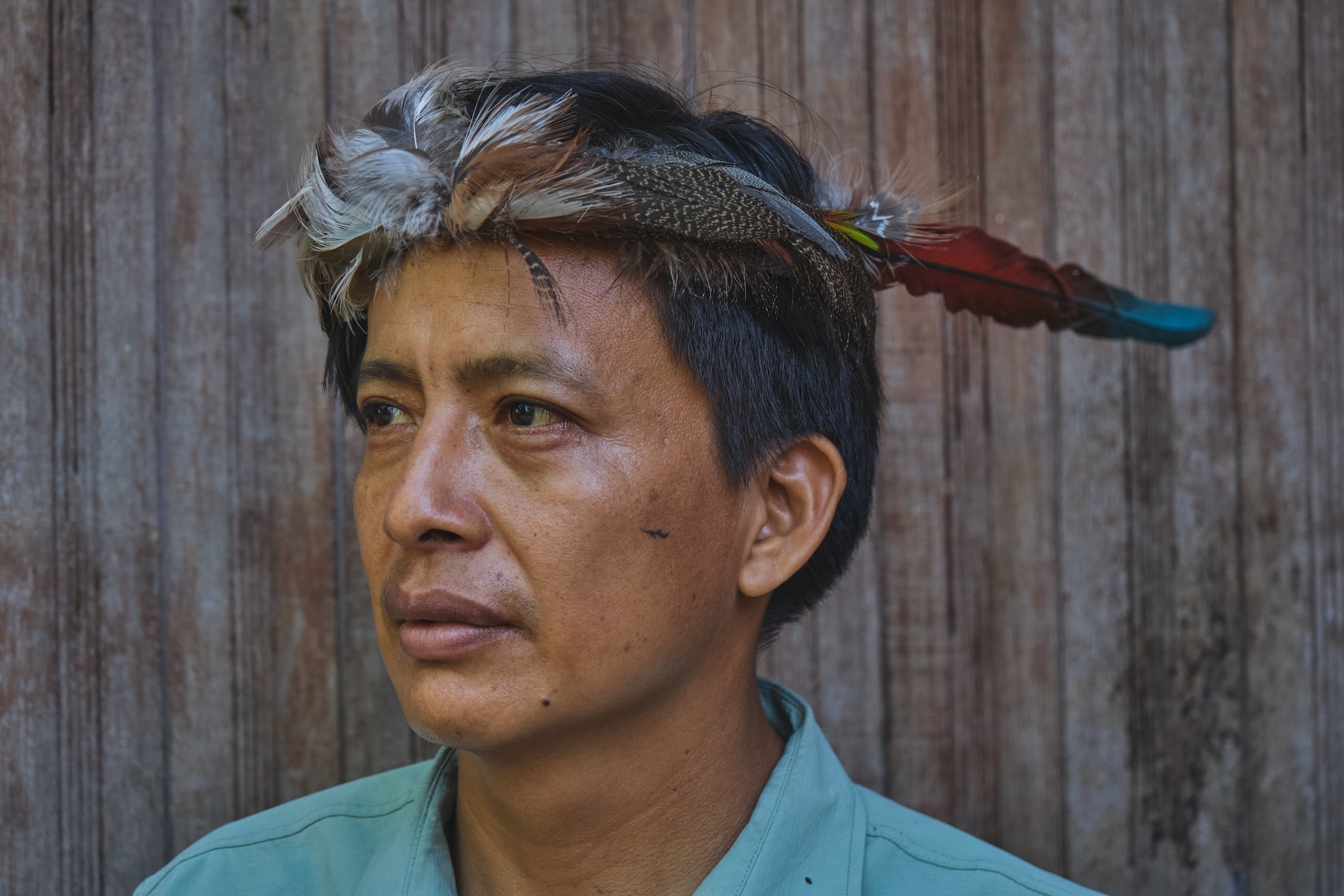

Among the adornments used by the Iskonawa are painted body designs, necklaces, crowns, and nose rings, among others. They are made with harvested forest materials as well as from hunted animals.
Body designs were an important part of the Iskonawa people's celebrations and feasts, where they gathered with other familiar groups. These designs did not differ between men and women. Achiote is used to paint designs on the face, while Huito is used for body designs.
Some records suggest that the body designs were associated with two names: "Shiwa" and "Hena." The former refers to the Shiwa worm, which is characterized by the patterns on its body, while the latter has few references; it is only known that the design alludes to fire (Rodriguez, 2020).


Body painting among the Iskonawa, according to Neyra Perez, was represented by animals, and they did this before going hunting:
“They painted themselves on their body when they went to hunt the sachavaca and monkey, sometimes on their face they also painted themselves (...) they painted themselves on their body so that the sachavaca would not see them and to protect themselves from other poisonous animals. They painted themselves with achiote."
The use of achiote on the face also had other purposes. For example, when they went out hunting, it served to scare away the spirits or jaguars in the bush, mistaking the achiote for blood.




Feather crowns were used by men at festivals or large celebrations. They were made of vegetable fibres obtained from tree bark, and they also had yellow feathers from birds such as the Paucar. These feathers were placed at the back of the crown.

The use of crowns also differentiated the status of the people, as Felix Ochavano tells us:
"My grandfather used to tell me, in the social parties they were organising, there was the group of single people, and those who were married. Their way of dressing was different, including the way they wore the crowns, those who had their families wore them like so."

The use of crowns among Indigenous people can have different meanings and purposes, depending on the culture and community to which they belong.
The "Chope" is a necklace that the Iskonawa women used to wear, long in length, made of shell fragments. This necklace was wrapped several times around the neck and fell on the chest as an ornament.
"Nobo" is a necklace that men used to wear, made of shorter shell fragments, wrapped around the neck only once. The pieces of shells were arranged closely together. "Teweti" is a necklace made of armadillo shell fragments or the teeth of hunted animals.
The "Rehpi" or "Nariguera" in the Iskonawa language are nose adornments of shell worn by both men and women, with the only difference being that women wore it in a triangular shape, whilst the men wore it in an ‘inverted canoe’ shape (Rodriguez, 2020). Another ornament used by Iskonawa men was the "Rome," sticks made from the stems of tobacco plants, which were pierced through both nostrils.











